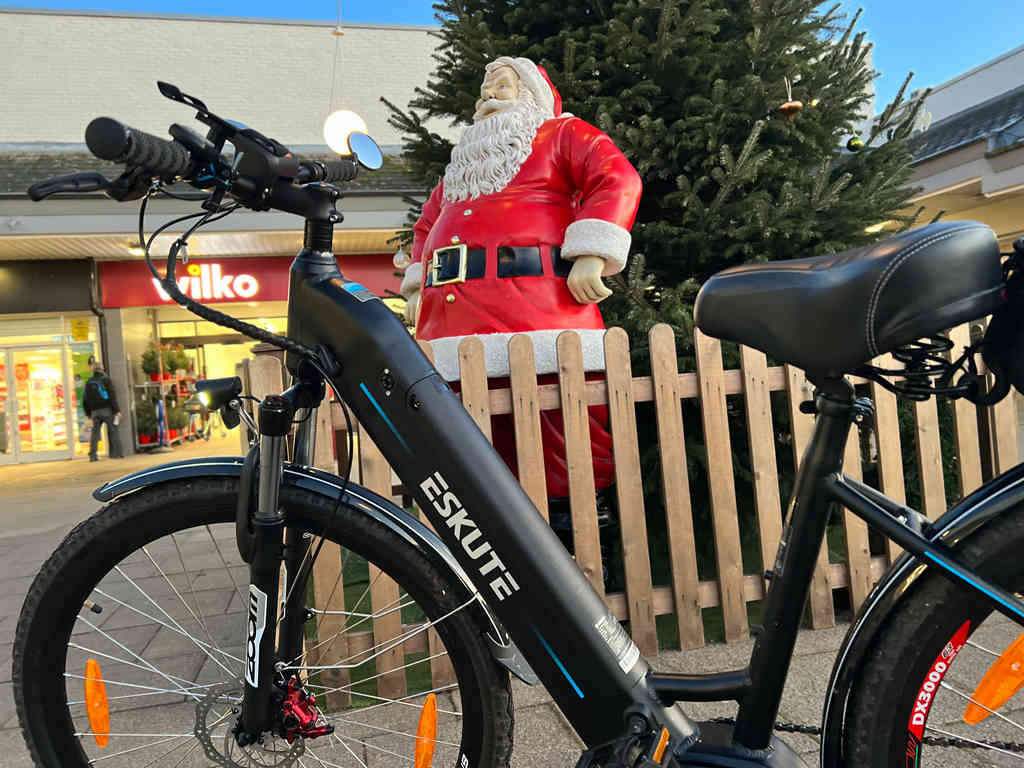Navigation
From time immemorial, men have always partaken in adventurous activities - one of them being biking. But with more adventure comes more risks, which is why it is necessary to take precautionary measures, especially when undertaking daring activities.
Bike helmets for men are essential protective gear designed to reduce the impact of accidents and prevent severe injuries, which reduces trauma on the head by absorbing some of the force that will usually be more severe.
Ultimately, the effectiveness of a bike helmet depends on how its materials absolve impact forces. There is more to this protective equipment which we discuss next.
Components of a Bike Helmet for Men
Bike helmets feature several essential parts that protect riders while remaining comfy. Here are six primary components of a bike helmet for men.
Shell
A helmet's outer shell gives it shape. Typically, helmets use thin plastic transformed into a hard shell to provide protection. Additionally, on the back of the helmet, shells frequently feature reflective materials to improve visibility.
EPS liner
Expanded polystyrene foam, or EPS, is frequently used to fill the interior of most helmets. This high-density foam cushions the head to prevent severe injuries and absorb specific collisions.
Chin strap
As the name implies, a chin strap goes over the chin. The chin strap secures your helmet to your head, so it won't likely fly off if you get hit.
Strap divider
The strap divider makes wearing the chin strap easier and more comfortable. This component ensures the strap doesn't get wriggled, so you can quickly buckle it.
Buckle
The buckle ensures the straps around the helmet are securely fastened. This part is responsible for keeping the helmet attached to your head.
MIPS
MIPS is an acronym for Multi-directional Impact Protection System. The MIPS allows your head to move inside the helmet, reducing rotational motion that can cause damaging effects to the brain. However, note that not every bike helmet comes with this feature.

Types of Bike Helmets for Men
There is more than one type of bike helmet for men. This safety equipment comes in different shapes and forms for different purposes. Let's discuss the five main types of bike helmets.
Road helmets
Road helmets typically consist of EPS foam coated by a thin plastic shell and have an elongated shape with vents. These helmets are the most common helmet types for most riders worldwide, with millions of sales yearly.
Commuter helmets
Instead of the elongated design on road helmets, commuter helmets have a rounded contour. These helmets also have vents typically constructed of EPS foam covered in thin plastic. Some helmet manufacturers include extra features like mirrors, winter ear coverings, and rear blinkers.
Children helmets
Men have pursued thrill since they were boys, so parents should make a habit of putting helmets on for their safety. Children's helmets are a smaller version of adult helmets. These helmets frequently come with visors to shield their eyes from the sun and many vents for optimal circulation. In addition, children's helmets feature multiple buckling options to keep the helmet secure.
Mountain racing helmets
These helmets are lightweight and feature a chin bar for added facial protection. Bike racing helmets are ideal for off-road downhill competitions. The EPS foam has a thin plastic shell with a thicker shell consisting of plastic, carbon fibre, or fibreglass. Moreover, these helmets feature a lot of vents for excellent airflow during those challenging bike rides.
BMX helmets
BMX helmets have a large, squared-off visor attached to the helmet and a chin bar for facial protection. The outer shell utilizes plastic, fibreglass, or carbon fibre surrounding the EPS foam core. In addition, these bikes usually have vents; however, not all BMX helmets come with vents.

Why You Should Wear a Bike Helmet
There has been a lot of debate on whether helmets work, which has led to a lot of speculation about whether or not wearing helmets during rides has any benefits. Well, there are many reasons why it is advisable you do!
- First, helmets protect your head and brain from severe injuries. The head is a major body part and the most susceptible to damage in bicycle accidents. Therefore, it is essential to put in place protective gear while riding. Ensure the helmet is the right size, offering sufficient protection and preventing external and internal harm to your head.
- Furthermore, helmets offer protection from bad weather. If you live in the UK, you must have experienced riding in bad weather. Fortunately, a helmet — especially one with a visor — will shield you from the sun's UV rays, rain, and wind gusts.
- Finally, helmets make you more visible. You can become more noticeable to cars by wearing a bike helmet with reflective strips or LEDs. Reflective helmets are crucial during the dark when visibility is low to prevent road accidents. We recommend a brightly coloured helmet for better visibility throughout the day.
How Often Should a Helmet Be Replaced
Given that a helmet is one of the essential items that directly affect your safety while riding, it is logical to ensure it's always in excellent condition. First, if you've recently suffered a crash, you need to replace your helmet should be considered a single-use item because the EPS foam inside them permanently compresses on impact.
You should always presume that the helmet has sustained damage in any accident. Therefore, we recommend getting a new helmet, even if it seems fine. Additionally, you should replace your helmet every five years, even if you haven't had any crashes. Critical components may eventually become weaker due to exposure to weather elements, such as rain, UV rays, etc., so it's best to change the helmet to a newer and better one.
Tips for wearing a helmet

It's vital to wear a helmet correctly to guarantee safety. A helmet isn't a fashion piece — even though it can be — so you must follow the correct steps and practices when putting them on. Find out helpful helmet-wearing tips below.
- Loosen the straps on the helmet before putting it on your head to ensure it fits comfortably. You can secure and adjust the grip once the helmet is on your head. Also, ensure the helmet is about two inches away from your brow. Then, fasten the helmet straps tight enough to fit securely on your head but not too tight to feel restricted and uncomfortable.
- Check that the chin strap has just the right amount of slack. A helpful tip is that you should be able to fit one or two fingers in the strap. Afterwards, you can adjust the straps and buckle as you deem fit.
- Ensure the helmet is level on top of your head and not positioned too far back on your head, exposing your forehead.
- Avoid donning an oversized or undersized helmet. A too-wide helmet can move around your head and not protect you as it should. On the other hand, an undersized helmet can feel uncomfortable and will not sit properly on the head.
- Don't wear a thick hat over your helmet. We know it can be tempting to put a hat underneath your helmet during a typical chilly day in the UK. However, doing so puts the helmet improperly on your head, which is dangerous and unsafe.
- Pack your hair neatly. To ensure that your helmet fits properly, bikers with a full head may need to change their hairstyle or get a haircut, so the helmet stays secure on the head.
Conclusion
We all love biking, but it's essential to observe these safety practices so you can enjoy riding for a long time. If you're looking for a new helmet, we recommend this excellent Eskute helmet. This helmet offers maximum safety while feeling comfy. So, what are you waiting for? Contact us and get yours for yourself or someone you love!














1 comment
Matija
Great article!(?)
What would the difference between helmets for men and women be?
Could me and my girlfriend use the same type helmet with no safety compromise (enduro open lid and enduro FF)?
We were not aware of male-female specific helmet design. Nor did Fox Racing or IXS mentioned gender specific design in their helmet specification.
Leave a comment
This site is protected by reCAPTCHA and the Google Privacy Policy and Terms of Service apply.